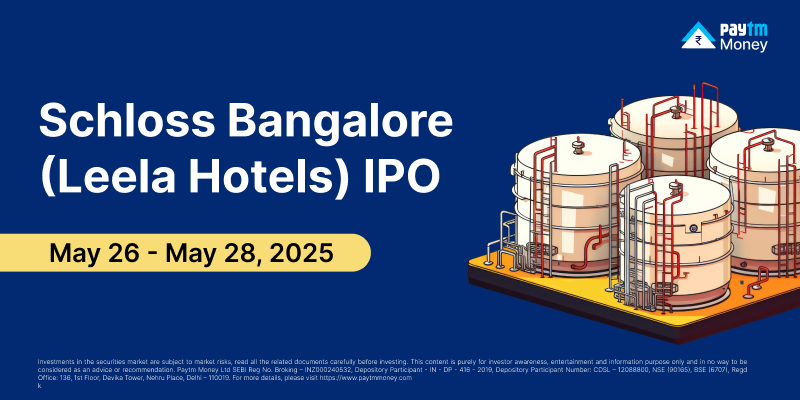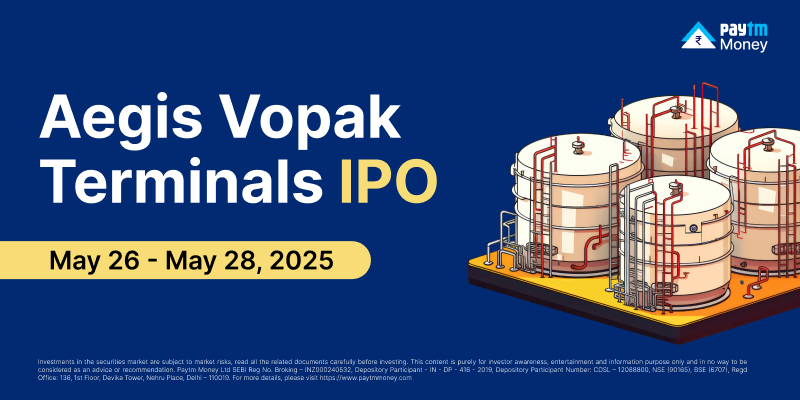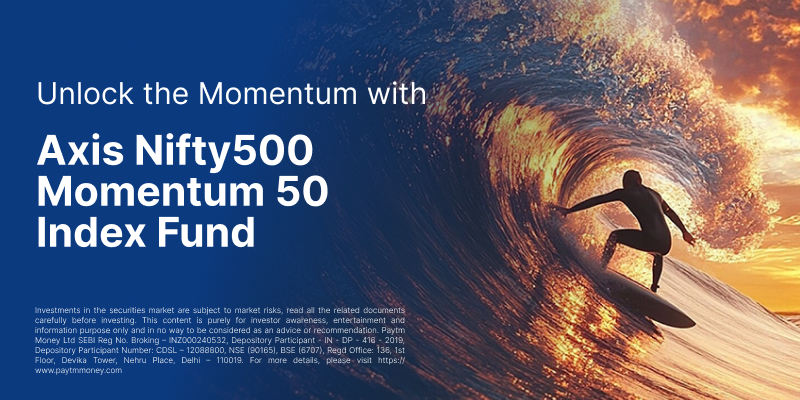The Famous Five: Top 5 Funds and The Stocks They Own8 min read
Introduction
Maximizing your returns is always a good thing. Which is why investing in mutual funds is not enough – but you have to pick the right funds to invest in.
Funds that invest in large-cap companies usually have the potential for stable growth than the market benchmarks. These companies tend to be less volatile than small and mid-cap companies and can offer investors a more stable investment option.
Secondly, large-cap funds tend to be less risky than small and mid-cap funds, as they have a higher level of liquidity and are less susceptible to market fluctuations. This makes them a good option for investors who are looking for a long-term investment with a low level of risk.
Large-cap funds can also offer exposure to a wide range of sectors and industries, as they typically hold a diversified portfolio of large-cap stocks. This can help to reduce the impact of market fluctuations on the fund’s overall performance.
Large-cap funds tend to offer a relatively high level of liquidity, as mentioned earlier, as large-cap stocks are generally more widely traded than small and mid-cap stocks. This means that investors can easily buy and sell their holdings in the fund, which can be important for those who may need to access their funds quickly.
Overall, investing in large-cap funds in the Indian stock market can offer investors a range of benefits, including stability, lower risk, diversification, and liquidity. However, as with any investment, it is important to do your own research and consult with a financial advisor before making any investment decisions.
High five (Source: ET Money)
Here are the best large-cap funds in the Indian market, based on their historical performance and other factors:
- Mirae Asset Large Cap Fund: This fund has consistently delivered high returns over the years and has a strong track record of beating its benchmark. It has a well-diversified portfolio with a mix of large-cap stocks across various sectors. The major holdings include:
- Reliance Industries
- ICICI Bank
- HDFC Bank
- Infosys
- Axis Bank
- ICICI Prudential Bluechip Fund: This fund has a large and well-diversified portfolio of blue-chip stocks. It has a consistent track record of generating stable returns and is a popular choice among investors.The major holdings include:
- HDFC Bank
- ICICI Bank
- Infosys
- Reliance Industries
- Axis Bank
- SBI Bluechip Fund: This fund invests in high-quality large-cap stocks with a focus on long-term growth. It has a well-diversified portfolio of stocks across various sectors and has consistently outperformed its benchmark. The major holdings include:
- Reliance Industries
- ICICI Bank
- HDFC Bank
- Infosys
- Axis Bank
- HDFC Top 100 Fund: This fund has a large and well-diversified portfolio of large-cap stocks with a focus on quality and growth. It has a consistent track record of delivering strong returns over the long term. The major holdings include:
- HDFC Bank Ltd.
- Reliance Industries Ltd.
- Infosys Ltd.
- ICICI Bank Ltd.
- Kotak Mahindra Bank Ltd.
- Axis Bluechip Fund: This fund invests in a mix of large-cap stocks with a focus on quality and growth. It has a well-diversified portfolio across various sectors and has a consistent track record of delivering strong returns over the long term. The major holdings include:
- HDFC Bank
- Reliance Industries
- ICICI Bank
- Kotak Mahindra Bank
- Tata Consultancy Services
Below is a table comparing the performance of all these funds over a 5-year period: Talking about similarities, all these mutual funds invest in large-cap companies with a market capitalization above a certain threshold, typically the top 100 or 200 companies in the country.
Talking about similarities, all these mutual funds invest in large-cap companies with a market capitalization above a certain threshold, typically the top 100 or 200 companies in the country.
These mutual funds aim to generate long-term capital appreciation by investing in well-established and financially stable large-cap companies with a proven track record. They have a diversified portfolio of stocks across various sectors such as finance, technology, healthcare, and consumer goods.
Additionally, they have a minimum investment requirement that is affordable for most investors, making it easier for individuals to participate in the Indian equity market. In summary, these mutual funds have similar investment objectives, investment strategies, and track records of consistent returns. These similarities make it easier for investors to compare and choose the fund that best fits their investment goals and risk profile.
Major portfolio characteristics
Beta, Tracking Error and Active Share are some of the most important portfolio characteristics used by investors and portfolio managers to assess the performance and risk of a mutual fund or portfolio.
Investors should consider these metrics in conjunction with other factors, such as fees, diversification, and investment objectives, when making investment decisions. Let’s compare our top 5 mutual fund picks on the basis of these characteristics:
- Beta: Beta is a measure of the volatility, or systematic risk, of a mutual fund or portfolio compared to the overall market. It measures the degree to which a mutual fund’s returns move in relation to the returns of the market. This means, if Beta = 1, the fund’s returns are exactly the same as the market,
Beta > 1, the fund is more volatile than the market.
Beta < 1, the fund is less volatile than the market.

Based on these values, we can see that HDFC Equity Fund, Mirae Asset Large Cap Fund, and ICICI Prudential Bluechip Fund have beta values slightly above 1, indicating that these funds are slightly more volatile than the overall market. On the other hand, SBI Bluechip Fund and Axis Bluechip Fund have beta values slightly below 1, indicating that these funds are slightly less volatile than the overall market.
- Tracking Error: Tracking Error is a measure of the deviation of a mutual fund’s returns from its benchmark index. It measures the degree to which a mutual fund’s performance tracks the performance of its benchmark. A higher tracking error means that the mutual fund’s returns are more likely to deviate from its benchmark index, while a lower tracking error means that the mutual fund’s returns are more likely to track its benchmark index.

From the table, it is clear that the Mirae Asset Large Cap Fund has the lowest tracking error of 1.22%, indicating that its returns are more closely aligned with its benchmark index than the other mutual funds. The HDFC Equity Fund has the highest tracking error of 4.67%, which suggests that its returns may deviate significantly from its benchmark index. The tracking errors for the SBI Bluechip Fund, Axis Bluechip Fund, and ICICI Prudential Bluechip Fund fall in the middle range.
- Active share: Active share is a measure of the degree to which a mutual fund’s holdings differ from its benchmark index. It measures the percentage of the mutual fund’s portfolio that is different from its benchmark index. An active share of 0% means that the mutual fund’s portfolio is identical to its benchmark index, while an active share of 100% means that the mutual fund’s portfolio is completely different from its benchmark index.

We can see here that The ICICI Prudential Bluechip Fund has the highest active share, indicating a larger deviation from its benchmark index. The SBI Bluechip Fund and Mirae Asset Large Cap Fund also have high active shares, indicating that their portfolio holdings are significantly different from their benchmark indices. On the other hand, the HDFC Equity Fund and Axis Bluechip Fund have a comparatively lower active share than the other mutual funds. This means that their portfolio holdings are relatively closer to their benchmark indices.
- % Mid-cap Exposure – Mid-cap exposure in large-cap funds is usually limited. However, some large-cap funds may have a small allocation to mid-cap stocks for diversification or alpha generation purposes. The mid-cap exposure percentage is subject to change based on the fund manager’s investment strategy and market conditions. As of March 2023, the mid-cap exposure in the top 5 large-cap mutual funds in India is as follows:

As we can see from the table, HDFC Equity Fund has the highest midcap exposure, at 15.29%. And the Axis Bluechip Fund has the lowest midcap exposure, at 1.49%. This suggests that the fund has a predominantly large-cap portfolio with minimal allocation to midcap stocks. SBI Bluechip Fund and ICICI Prudential Bluechip Fund have moderate midcap exposures of 4.05% and 6.24%. Whereas, Mirae Asset Large Cap Fund has a midcap exposure of 10.33%, which is higher than SBI Bluechip Fund and ICICI Prudential Bluechip Fund, but lower than HDFC Equity Fund.
- Correlation with benchmark index: Along with the above points, mutual funds are also analyzed with respect to their correlation with their respective benchmark indices. Let’s analyze the top 5 mutual funds and their benchmark indices in the table below:

These statistics show that all the mutual funds have a high correlation with their respective benchmark indices, ranging from 0.92 to 0.96. This suggests that the returns of these mutual funds are largely driven by the performance of their benchmark indices.
Conclusion
As always, it’s first worth noting that the analysis above is based on historical data and should not be used as the sole basis for making investment decisions.
Investors should consider a range of factors, including their investment goals, risk tolerance, and investment time horizon, before making any investment decisions. Additionally, past performance is not indicative of future results, and mutual fund performance can be affected by a variety of factors, including changes in market conditions and fund management.
Overall, investing in large-cap mutual funds can be a smart investment strategy for investors who are looking for stable returns, regular income, high liquidity, and long-term growth potential.
Another advantage of investing in large-cap mutual funds is that they often provide better dividend yields than mid-cap or small-cap funds. This can be particularly attractive for investors looking for regular income from their investments. Therefore, it would be wise to invest in large-cap funds to stabilize your portfolio and maximize your growth.
Disclaimer- Investment in securities market are subject to market risks, read all the related documents carefully before investing. This content is purely for information purpose only and in no way to be considered as an advice or recommendation. Brokerage will not exceed the SEBI prescribed limit. Paytm Money Ltd. SEBI Reg No Broking – INZ000240532. NSE (90165), BSE( 6707) , BSE STAR MF Member ID – 53873. Regd. Office: 136, 1st Floor, Devika Tower, Nehru Place, Delhi – 110019. For complete T&C and Disclaimers, visit www.paytmmoney.com/stocks/policies/terms




